Antineoplastic agents comprise one aspect of chemotherapy. These drugs act on and kill altered human cells. While their action is intended to target abnormal cells, normal cells are also affected. These drugs can work by affecting cell survival or by boosting the immune system in its efforts to combat the abnormal cells.
Antineoplastic Agents: Generic and Brand Names
Here is a table of commonly encountered antineoplastics, their generic names, and brand names:
- Alkylating Agents
- altretamine (Hexalen)
- bendamustine (Treanda)
- busulfan (Busulfan, Myleran)
- carboplatin (Paraplatin)
- carmustine (BiCNU, Gliadel)
- chlorambucil (Leukeran)
- cisplatin (Platinol-AQ)
- cyclophosphamide (Cytoxan, Neostar)
- decarbazine (DTIC-Dome)
- ifosfamide (Ifex)
- lomustine (CeeNu)
- mechlorethamine (Mustargen)
- melphalan (Alkeran)
- oxaliplatin (Eloxatin)
- procarbazine (Matulane)
- streptozocin (Zanosar)
- temozolomide (Temodar)
- thiotepa (Thioplex)
- Antimetabolites
- capecitabine (Xeloda)
- cladribine (Leustatin)
- clofarabine (Clolar)
- cytarabine (DepoCyt, Tarabine PFS)
- floxuridine (FUDR)
- fludarabine (Fludara)
- fluorouracil (Adrucil, Carac, Efudex, Fluoroplex)
- gemcitabine (Gemzar)
- mercaptopurine (Purinethol)
- methotrexate (Rheumatrex, Trexall)
- pemetrexed (Alimta)
- pentostatin (Nipent)
- pralatrexate (Folotyn)
- thioguanine (Tabloid)
- Antineoplastic Antibiotics
- bleomycin (Blenoxane)
- dactinomycin (Cosmegen)
- daunorubicin (DaunoXome)
- doxorubicin (Adriamycin, Doxil)
- epirubicin (Ellence)
- idarubicin (Idamycin)
- mitomycin (Mutamycin)
- mitoxantrone (Noantrone)
- valrubicin (Valstar)
- Miotic Inhibitors
- cabazitaxel (Jevtana)
- docetaxel (Taxotere)
- etoposide (Toposar (VePesid)
- ixabepilone (Ixempra)
- paclitaxel (Abraxane, Onxol Taxol)
- teniposide (Vumon)
- vincristine (Oncovin, Vincasar)
- vinorelbine (Navelbine)
- Hormones and Hormone Modulators
- anastrozole (Arimidex)
- bicalutamide (Casodex)
- degarelix (Degarelix for Injection)
- estramustine (Emyct)
- exemestane (Aromasin)
- flutamide
- fulvestrant (Faslodex)
- goserelin (Zoladex)
- histrelin (Vantas)
- letrozole (Femara)
- leuprolide (Lupron, Eligard)
- megestrol (Megace)
- mitotane (Lysodren)
- nilutamide (Nilandron)
- tamoxifen (Soltamox)
- toremifene (Fareston)
- triptorelin pamoate (Trelstar Depot)
- Cancer Cell-Specific Agents
- Protein Tyrosine Kinase Inhibitors
- everolimus (Afinitor)
- gefitnib (Iressa)
- imatinib (Gleevec)
- lapatinib (Tykerb)
- nilotinib (Tasigna)
- pazopanib (Votrient)
- sorafenib (Nexavar)
- sunitinib (Suten)
- temsirolimus (Torisel)
- Epidermal Growth Factor Inhibtors
- erlotinib (Tarceva)
- Proteasome Inhibitor
- bortezomib (Velcade)
- Protein Tyrosine Kinase Inhibitors
- Other antineoplastics
- arsenic trioxide (Trisenox)
- asparaginase (Elspar)
- azactidine (Vidaza)
- bexarotene (Targretin)
- decitabine (Dacogen)
- hydroxyurea (Hydra)
- irinotecan (Camptosar)
- nelarabine (Arranon)
- pegaspargase (Oncaspar)
- porfimer (Photofrin)
- sipuleucel-T (Provenge)
- talc powder (Sclerosol)
- topotecan (Hycamitin)
- tretinoin (Vesanoid)
- vorinostat (Zolinza)
Disease Spotlight: Cancer
- Cancer is the second leading cause of death in the United States. Treatment is usually multidisciplinary, prolonged, and often debilitating. It can develop at any age.
- Proliferation of abnormally-dividing cells starts the pathologic process. Genetic abnormalities are passed along daughter cells, eventually producing a tumor or neoplasm that has characteristics quite different from those of the original tissue.
- Consequently, original cell characteristics are lost. Anaplasia is the loss of cellular differentiation and organization. Autonomy is the ability to grow without usual homeostatic restrictions that regulate cell growth and control.
- Uncontrolled growth of neoplastic cells will lead to invasion of healthy tissues in the area and metastasis, or traveling from the place of origin to develop new tumors in other areas of the body.
- Cancers can be divided into two groups: 1) solid tumors; and 2) hematological malignancies. Solid tumors can further be differentiated into carcinomas, or tumors that originate in epithelial cells, and sarcomas, or tumors that originate in the mesenchyme and are made up of embryonic connective tissue cells.
- The goal of cancer chemotherapy is to decrease the size of neoplasm so that the human immune system can deal with it.
Alkylating Agents
- Alkylating agents are non-cell cycle specific antineoplastics drugs. They can affect cells even in the resting phase.
- These are the agents of choice for slow-growing cancers.
Therapeutic Action
The desired and beneficial action of agents for alkylating agents is:
- Reacting chemically with portions of RNA, DNA, or other cellular proteins to produce their cytotoxic effects.
- Alkylating agents are most potent when binding with cellular DNA.
- The oldest drugs in this class are nitrogen mustards.
Indications
Alkylating agents are indicated for the following medical conditions:
- Treatment of slow-growing cancers, like lymphomas, leukemias, myelomas, some ovarian, testicular, and breast cancers, and pancreatic cancers.
Here are some important aspects to remember for indication of antineoplastics in different age groups:
Children
- Treatment of pediatric cancers follow developed antineoplastic protocols and combination therapy is stressed to eliminate as many of the mutant cells as possible. Checking the dosage for children is crucial because of possible drug toxicity. In addition, the nutritional needs and hydration status of children should be included in the considerations for formulating a care plan.
- Even under therapy, children must be allowed to explore and learn like any other children. They would need extra support and comfort as body image problems, lack of energy, and risk for infection can isolate them. Lastly, bone marrow activity should be monitored carefully and dose should be adjusted carefully.
Adults
- Adults are also challenged with changes in body image and activities that come with chemotherapy. It is usual for this age group to fear the diagnosis too. Therefore, establishing a good support system is important.
- Antineoplastic agents are contraindicated to pregnant and nursing women. Education, support, and referrals to appropriate specialists are important. Women of childbearing age should use barrier contraceptives when these drugs are being taken.
Older adults
- Older patients are more susceptible to GI and CNS adverse effects of antineoplastic therapy, particularly those with hepatic and renal dysfunctions. Precautions are used accordingly. Protection from infection and injury should be the focus of nurses.
Pharmacokinetics
Here are the characteristic interactions of alkylating agents and the body in terms of absorption, distribution, metabolism, and excretion:
| Route | Onset | Peak | Duration |
|---|---|---|---|
| Oral | Varies | 1 h | 15-20 h |
Contraindications and Cautions
The following are contraindications and cautions for the use of alkylating agents:
- Pregnancy and lactation. Severe effects to fetus and neonate.
- Known allergy to drugs. Caution is exercised to prevent hypersensitivity reactions.
- Bone marrow suppression. The index for redosing and dosing levels
- Suppressed renal or hepatic function. Interfere with drug metabolism and excretion.
Adverse Effects
Use of alkylating agents may result to these adverse effects:
- GI: nausea, vomiting, anorexia, diarrhea, and mucous membrane deterioration, hepatic toxicity
- GU: renal toxicity, potentially toxic increase in uric acid levels
- Hematological: bone marrow suppression
- Alopecia or hair loss
Antimetabolites
- Antimetabolites are drugs that have chemical structures similar to those of various natural metabolites that are necessary for growth and division of rapidly growing neoplastic cells and normal cells.
Therapeutic Action
The desired and beneficial action of antimetabolites is:
- Inhibiting DNA production in cells that depend on certain natural metabolites to produce their DNA. They replace these needed metabolites and thereby prevent normal cellular function.
- Inhibit thymidylate synthase, DNA polymerase, or folic acid reductase, all of which are needed for DNA synthesis.
- Considered to be S phase specific in the cell cycle, they are most effective in rapidly dividing cells, preventing cell replication, and leading to cell death.
Indications
Antimetabolites are indicated for the following medical conditions:
- Treatment of various leukemias and some GI and basal cell cancers
- Use has been somewhat limited because neoplastic cells rapidly develop resistance to these agents. Therefore, they are commonly administered as part of combination therapy.
Pharmacokinetics
Here are the characteristic interactions of antimetabolites and the body in terms of absorption, distribution, metabolism, and excretion:
| Route | Onset | Peak | Duration |
|---|---|---|---|
| Oral | Varies | 1-4 h | – |
| IV | Rapid | 0.5-2 h | – |
| Half-life (T1/2) | Metabolism | Excretion |
|---|---|---|
| 2-4 h | – | Kidney (urine); unchanged |
Contraindications and Cautions
The following are contraindications and cautions for the use of antimetabolites:
- Known allergy to drug. Prevent hypersensitivity reactions
- Pregnancy and lactation. Severe effects on the fetus and neonate
- Bone marrow suppression. Index of redosing and dosing levels
- Renal and hepatic dysfunction. Interfere with drug metabolism and excretion
- Known GI ulceration or ulcerative diseases. Can be exacerbated by the effects of the drug
Adverse Effects
Use of antimetabolites may result to these adverse effects:
- CNS: headache, drowsiness, aphasia, fatigue, malaise, dizziness
- Respiratory: pulmonary toxicity, interstitial pneumonitis
- Hematological: bone marrow suppression
- GI: nausea, vomiting, anorexia, diarrhea, mucous membrane deterioration, hepatic toxicity
- GU: renal toxicity
- Leucovorin is an active form of folic acid that is used to rescue normal cells from the adverse effects of methotrexate therapy in the treatment of osteosarcoma.
Antineoplastic Antibiotics
- This group of drugs is selective for bacterial cells. However, they are also toxic to human cells.
- They are aimed towards rapidly-multiplying cells.
Therapeutic Action
The desired and beneficial action of antineoplastics antibiotic is:
- Either breaking up DNA links or preventing DNA synthesis
- They interfere with cellular DNA synthesis by inserting themselves between base pairs in the DNA chain. This causes a mutant DNA molecule, leading to cell death.
Indications
Antineoplastic antibiotics are indicated for the following medical conditions:
- Treatment of various types of cancer, particularly those with rapidly-dividing nature.
- These drugs have potentially adverse effects which limit their usefulness in patients with pre-existing disease and those who are debilitated.
Pharmacokinetics
Here are the characteristic interactions of antineoplastic antibiotics and the body in terms of absorption, distribution, metabolism, and excretion:
| Route | Onset | Peak | Duration |
|---|---|---|---|
| IV | Rapid | 2 h | 24-36 h |
| Half-life (T1/2) | Metabolism | Excretion |
|---|---|---|
| 12 min, then 3.3 h, then 29.6 h | Liver | Kidney (urine), liver (bile), colon (feces) |
Contraindications and Cautions
The following are contraindications and cautions for the use of antineoplastic antibiotics:
- Known allergy to drug. Prevent hypersensitivity reactions
- Pregnancy and lactation. Severe effects on the fetus and neonate
- Bone marrow suppression. Index of redosing and dosing levels
- Renal and hepatic dysfunction. Interfere with drug metabolism and excretion
- Known GI ulceration or ulcerative diseases. Can be exacerbated by the effects of the drug
- Pulmonary problems. Exacerbated by bleomycin or mitomycin
- Cardiac problems. Exacerbated by idarubicin or mitoxantrone
Adverse Effects
Use of antineoplastic antibiotics may result to these adverse effects:
- CNS: headache, drowsiness, aphasia, fatigue, malaise, dizziness
- Respiratory: pulmonary toxicity, interstitial pneumonitis
- Hematological: bone marrow suppression
- GI: nausea, vomiting, anorexia, diarrhea, mucous membrane deterioration, hepatic toxicity
- GU: renal toxicity
- Alopecia
Mitotic Inhibitors
- Drugs that kill cells as the process of mitosis begins.
- Mitotic inhibitors are cell cycle-specific agents that inhibit DNA synthesis.
Therapeutic Action
The desired and beneficial action of mitotic inhibitors is:
- Interfering with the ability of the cell to divide by blocking or altering the M phase of the cell cycle.
Indications
Mitotic inhibitors are indicated for the following medical conditions:
- Treatment of a variety of tumors and leukemias.
Pharmacokinetics
Here are the characteristic interactions of mitotic inhibitors and the body in terms of absorption, distribution, metabolism, and excretion:
| Route | Onset | Peak | Duration |
|---|---|---|---|
| IV | Varies | 15-30 min | – |
| Half-life (T1/2) | Metabolism | Excretion |
|---|---|---|
| 5 min, then 2.3 hrs, then 85 hrs | Liver | Kidney (urine), colon (feces) |
Contraindications and Cautions
The following are contraindications and cautions for the use of mitotic inhibitors:
- Known allergy to drug. Prevent hypersensitivity reactions
- Pregnancy and lactation. Severe effects on the fetus and neonate
- Bone marrow suppression. Index of redosing and dosing levels
- Renal and hepatic dysfunction. Interfere with drug metabolism and excretion
- Known GI ulceration or ulcerative diseases. Can be exacerbated by the effects of the drug
Adverse Effects
Use of mitotic inhibitors may result to these adverse effects:
- CNS: headache, drowsiness, aphasia, fatigue, malaise, dizziness
- Respiratory: pulmonary toxicity, interstitial pneumonitis
- Hematological: bone marrow suppression
- GI: nausea, vomiting, anorexia, diarrhea, mucous membrane deterioration, hepatic toxicity
- GU: renal toxicity
- Can cause necrosis and cellulitis if extravasation occurs
Hormones and Hormone Modulators
- Some cancers are sensitive to estrogen stimulation. Estrogen-receptor sites on the tumor react with circulating estrogen, and this reaction stimulates the tumor cells to grow and divide.
- Hormones and hormone modulators block or interfere with these receptor sites to prevent growth of the cancer and cause cell death.
- Some hormones are used to block the release of gonadotropic hormones in breast or prostate cancer if the tumors are responsive to gonadotropic hormones. Others may block androgen-receptor sites directly.
Therapeutic Action
The desired and beneficial action of hormones and hormone modulators is:
- Blocking the stimulation of growing cancer cells that are sensitive to the presence of that hormone.
Indications
Hormones and hormone modulators are indicated for the following medical conditions:
- Treatment of breast cancer in postmenopausal women or in other women without ovarian function.
- Treatment of prostatic cancers that are sensitive to hormone manipulation.
Pharmacokinetics
Here are the characteristic interactions of hormones and hormone modulators and the body in terms of absorption, distribution, metabolism, and excretion:
| Route | Onset | Peak | Duration |
|---|---|---|---|
| Oral | Varies | 4-7 h | – |
Contraindications and Cautions
The following are contraindications and cautions for the use of hormones and hormone modulators:
- Known allergy to drug. Prevent hypersensitivity reactions
- Hypercalcemia. Contraindication to the use of toremifene because the drug can increase serum calcium levels.
- Pregnancy and lactation. Severe effects on the fetus and neonate
- Bone marrow suppression. Index of redosing and dosing levels
- Renal and hepatic dysfunction. Interfere with drug metabolism and excretion
- Known GI ulceration or ulcerative diseases. Can be exacerbated by the effects of the drug
Adverse Effects
Use of hormones and hormone modulators may result to these adverse effects:
- Menopause-associated effects: hot flashes, vaginal spotting, vaginal dryness, moodiness, and depression
- Hematological: bone marrow suppression
- GI: hepatic toxicity
- GU: renal toxicity
- Hypercalcemia is encountered as the calcium is pulled out of the bones without estrogen activity to promote calcium deposition.
Cancer Cell-Specific Agents
- These agents are only specific to cancer cells and spare the healthy cells its devastating effects. Patients do not experience the numerous adverse effects associated with antineoplastic chemotherapy.
- Three groups of drugs are cancer cell-specific: protein tyrosine kinase inhibitors, epidermal growth factor inhibitor, and proteasome inhibitor.
Therapeutic Action
The desired and beneficial action of cancer cell-specific agents is:
- Protein tyrosine kinase inhibitors act on specific enzymes that are needed for protein building by specific tumor cells. Blocking of these enzymes inhibits tumor cell growth and division.
- Epidermal growth factor inhibitors are drugs that act on epidermal growth factor receptors which are found in both normal and cancerous cells but are more abundant on the latter.
- Proteasome inhibitors are drugs indicated for inhibition of proteasome in human cells, a large protein complex that works to maintain cell homeostasis and protein production.
Indications
Cancer cell-specific agents are indicated for the following medical conditions:
- Imatinib, the first drug approved protein tyrosine kinase inhibitor, is given orally and is approved to treat chronic myelocytic leukemia (CML). It selectively inhibits the Bcr-Abl tyrosine kinase created by the Philadelphia chromosome abnormality in CML.
- Bortezomib is used for the treatment of multiple myeloma in patients whose disease had progressed after two standard therapies.
Pharmacokinetics
Here are the characteristic interactions of cancer cell-specific agents and the body in terms of absorption, distribution, metabolism, and excretion:
| Route | Onset | Peak | Duration |
|---|---|---|---|
| Oral | Slow | 2-4 h | – |
Contraindications and Cautions
The following are contraindications and cautions for the use of cancer cell-specific agents:
- Pregnancy. All drugs in this class is pregnancy category D.
- Women of childbearing age. Must be advised to use barrier contraceptives while taking these drugs.
- Lactation. Can enter breastmilk and use is only justified if benefits outweigh the risks.
- Hepatic dysfunction. Increased risk of toxicity with imatinib and pazopanib.
- Risk for prolonged QT intervals (hypokalemia, hypomagnesia, taking drugs that can prolong QT intervals). Contraindicated with nilotinib.
- Known allergy to the drug. Prevent hypersensitivity reactions.
Adverse Effects
Use of cancer cell-specific agents may result to these adverse effects:
- Imatinib: GI upset, muscle cramps, heart failure, fluid retention, skin rash. Severe adverse effects of traditional antineoplastic therapy (severe bone marrow depression, alopecia, severe GI effects) do not occur.
- Gefitinib: potentially severe interstitial lung disease and various eye symptoms
- Pazopanib: some bone marrow depression, diarrhea, hypertension, and liver impairment, change in hair color
- Lapatinib: diarrhea, liver impairment, altered heart function
- Erlotinib and bortezomib: cardiovascular events, pulmonary toxicity
- Bortezomib: peripheral neuropathy, liver and kidney impairment
Interactions
The following are drug-drug interactions involved in the use of antineoplastic agents:
- Any drug that has potential for hepatic or renal toxicity
- Adversely affect drugs metabolized in the liver (e.g. oral anticoagulants)
- Antineoplastic antibiotics can increase toxicity of drugs that are toxic to the heart and lungs.
- Echinacea: increased risk of hepatotoxicity with antineoplastics
- Ginkgo: inhibits blood clotting, which can cause problems after surgery or with bleeding neoplasms
- Saw palmetto: increase the effects of various estrogen hormones and hormone modulators; advise patients taking such drugs to avoid this herb
- St. John’s wort: can greatly increase photosensitivity, which can cause problems in patient who have received radiation therapy or are taking drugs that cause other dermatological effects. In addition, it can decrease the effectiveness of some antineoplastic agents.
Nursing Considerations
Here are important nursing considerations when administering antineoplastic agents:
Nursing Assessment
These are the important things the nurse should include in conducting assessment, history taking, and examination:
- Assess for the mentioned cautions and contraindications (e.g. drug allergies, hepatorenal impairment, bone marrow suppression, pregnancy and lactation, etc.) to prevent any untoward complications.
- Perform a thorough physical assessment (other medications taken, orientation and reflexes, vital signs, bowel sounds, etc.) to establish baseline data before drug therapy begins, to determine effectiveness of therapy, and to evaluate for occurrence of any adverse effects associated with drug therapy.
- Monitor result of laboratory tests such as CBC with differential to identify possible bone marrow suppression and toxic drug effects and establish appropriate dosing for the drug; and liver and renal function tests to determine need for possible dose adjustment and identify toxic drug effects.
Nursing Diagnoses
Here are some of the nursing diagnoses that can be formulated in the use of these drugs for therapy:
- Acute pain related to GI, CNS, and skin effects of the drug
- Disturbed body image related to alopecia, skin effects, and impaired fertility
- Anxiety related to diagnosis
- Risk for infection related to bone marrow suppression
Implementation with Rationale
These are vital nursing interventions done in patients who are taking alkylating agents:
- Arrange for blood tests before, periodically during, and for at least 3 weeks after therapy to monitor bone marrow function to aid in determining the need for a change in dose or discontinuation of the drug.
- Administer medication according to scheduled protocol and in combination with other drugs as indicated to improve effectiveness.
- Ensure that patient is well hydrated to decrease risk of renal toxicity.
- Protect the patient from infection; limit invasive procedures when bone marrow suppression limits the patient’s immune/inflammatory responses.
- Provide small, frequent meals, frequent mouth care, and dietary consultation as appropriate to maintain nutrition when GI effects are severe.
- Arrange for proper head covering at extremes of temperature if alopecia occurs; a wig, scarf, or hat is important for maintaining body temperature.
- Plan for rest periods because fatigue and weakness are common effects of the drug.
Evaluation
Here are aspects of care that should be evaluated to determine effectiveness of drug therapy:
- Monitor patient response to therapy (alleviation of cancer being treated, palliation of signs and symptoms of cancer).
- Monitor for adverse effects (bone marrow suppression, GI toxicity, neurotoxicity, and alopecia, renal or hepatic dysfunction).
- Evaluate patient understanding on drug therapy by asking patient to name the drug, its indication, and adverse effects to watch for.
- Monitor patient compliance to drug therapy.
Recommended Resources
Our recommended nursing pharmacology resources and books:
Disclosure: Included below are affiliate links from Amazon at no additional cost from you. We may earn a small commission from your purchase which will help support us. Thank you! For more information, check out our privacy policy.
Pharm Phlash! Pharmacology Flash Cards #1 BEST SELLER!
Test-yourself review cards put critical clinical information for nearly 400 of the top generic medications at your fingertips. And, you can count on them for accuracy, because each card is based on content from Davis’s Drug Guide for Nurses. Increase your test scores in pharmacology class.
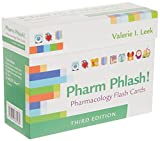
Focus on Pharmacology (8th Edition)
Focus on Nursing Pharmacology makes challenging concepts more approachable. Engaging learning features cultivate your clinical application, critical thinking and patient education capabilities. This updated 8th edition builds on your knowledge of physiology, chemistry and nursing fundamentals to help you conceptualize need-to-know information about each group of drugs.
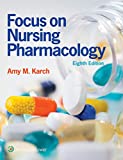
Pharmacology Made Incredibly Easy (Incredibly Easy! Series®)
Nursing pharmacology guide offers step-by-step guidance so you can grasp the fundamentals in enjoyable Incredibly Easy style. This is the perfect supplement to class materials, offering solid preparation for NCLEX® as well as a handy refresher for experienced nurses. Colorfully illustrated chapters offer clear, concise descriptions of crucial nursing pharmacology concepts and procedures.
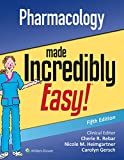
Lehne’s Pharmacology for Nursing Care (11th Edition)
The Eleventh Edition of Lehne’s Pharmacology for Nursing Care provides a thorough understanding of key drugs and their implications for nursing care. This text, written by renowned nursing educators, helps you comprehend and apply pharmacology principles. A clear and engaging writing style simplifies complex concepts, making even the most challenging pharmacology content enjoyable. We recommend this book if you want a comprehensive nursing pharmacology guide.
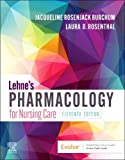
Nursing Drug Handbook
Nursing2023 Drug Handbook delivers evidence-based, nursing-focused drug monographs for nearly 3700 generic, brand-name, and combination drugs. With a tabbed, alphabetical organization and a “New Drugs” section, NDH2023 makes it easy to check drug facts on the spot.
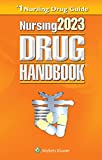
Pharmacology and the Nursing Process
The 10th edition of Pharmacology and the Nursing Process offers practical, user-friendly pharmacology information. The photo atlas contains over 100 unique illustrations and photographs depicting drug administration techniques. Updated drug content reflects the most recent FDA drug approvals, withdrawals, and therapeutic uses.
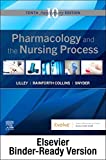
Mosby’s Pharmacology Memory NoteCards: Visual, Mnemonic, and Memory Aids for Nurses
The 6th edition of Mosby’s Pharmacology Memory NoteCards: Visual, Mnemonic, & Memory Aids for Nurses incorporates illustrations and humor to make studying easier and more enjoyable. This unique pharmacology review can be utilized as a spiral-bound notebook or as individual flashcards, making it ideal for mobile study.
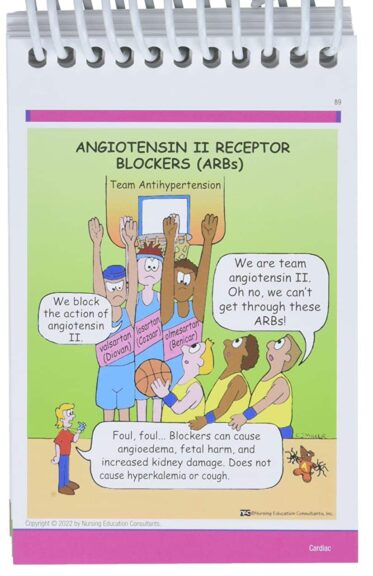
See Also
Here are other nursing pharmacology study guides:
- Nursing Pharmacology – Study Guide for Nurses
Our collection of topics related to nursing pharmacology - Pharmacology Nursing Mnemonics & Tips
These nursing mnemonics aim to simplify the concepts of pharmacology through the use of a simple, concise guide. - Generic Drug Name Stems Cheat Sheet
Learn about these generic drug name stems to help you make sense of drugs easier! - Common Drugs and Their Antidotes
A guide to drug antidotes that nurses should be familiar about. - IV Fluids and Solutions Guide & Cheat Sheet
Get to know the different types of intravenous solutions or IV fluids in this guide and cheat sheet. - Drug Dosage Calculations NCLEX Practice Questions (100+ Items)
Care to take the challenge? This quiz aims to help students and registered nurses alike grasp and master the concepts of medication calculation.
We have a pill for that…
Drug Guides NEW!
Individual drug guides and nursing considerations for the most common medications used in nursing pharmacology:
- Acetaminophen (Tylenol)
- Aspirin
- Atorvastatin (Lipitor)
- Enoxaparin (Lovenox)
- Furosemide (Lasix)
- Gabapentin
- Hydromorphone (Dilaudid)
- Lisinopril
- Metoprolol
- Morphine
Gastrointestinal System Drugs
Respiratory System Drugs
- Antihistamines
- Bronchodilators and Antiasthmatics
- Decongestants
- Expectorants and Mucolytics
- Inhaled Steroids
- Lung Surfactants
Endocrine System Drugs
- Adrenocortical Agents
- Antidiabetic Agents
- Glucose-Elevating Agents
- Hypothalamic Agents
- Insulin
- Parathyroid Agents: Bisphosphonates, Calcitonins
- Pituitary Drugs
- Sulfonylureas
- Thyroid Agents
Autonomic Nervous System Drugs
- Adrenergic Agonists (Sympathomimetics)
- Adrenergic Antagonists (Sympatholytics)
- Anticholinergics (Parasympatholytics)
- Cholinergic Agonists (Parasympathomimetics)
Immune System Drugs
Chemotherapeutic Agents
- Anthelmintics
- Anti-Infective Drugs
- Antibiotics
- Antifungals
- Antineoplastic Agents
- Antiprotozoal Drugs
- Antiviral Drugs
Reproductive System Drugs
Nervous System Drugs
- Antidepressants
- Antiparkinsonism Drugs
- Antiseizure Drugs
- Anxiolytics and Hypnotic Drugs
- General and Local Anesthetics
- Muscle Relaxants
- Narcotics, Narcotic Agonists, and Antimigraine Agents
- Neuromuscular Junction Blocking Agents
- Psychotherapeutic Drugs
Cardiovascular System Drugs
References and Sources
References and sources for this pharmacology guide for Antineoplastic Agents:
- Karch, A. M., & Karch. (2011). Focus on nursing pharmacology. Wolters Kluwer Health/Lippincott Williams & Wilkins. [Link]
- Katzung, B. G. (2017). Basic and clinical pharmacology. McGraw-Hill Education.
- Lehne, R. A., Moore, L. A., Crosby, L. J., & Hamilton, D. B. (2004). Pharmacology for nursing care.
- Smeltzer, S. C., & Bare, B. G. (1992). Brunner & Suddarth’s textbook of medical-surgical nursing. Philadelphia: JB Lippincott.
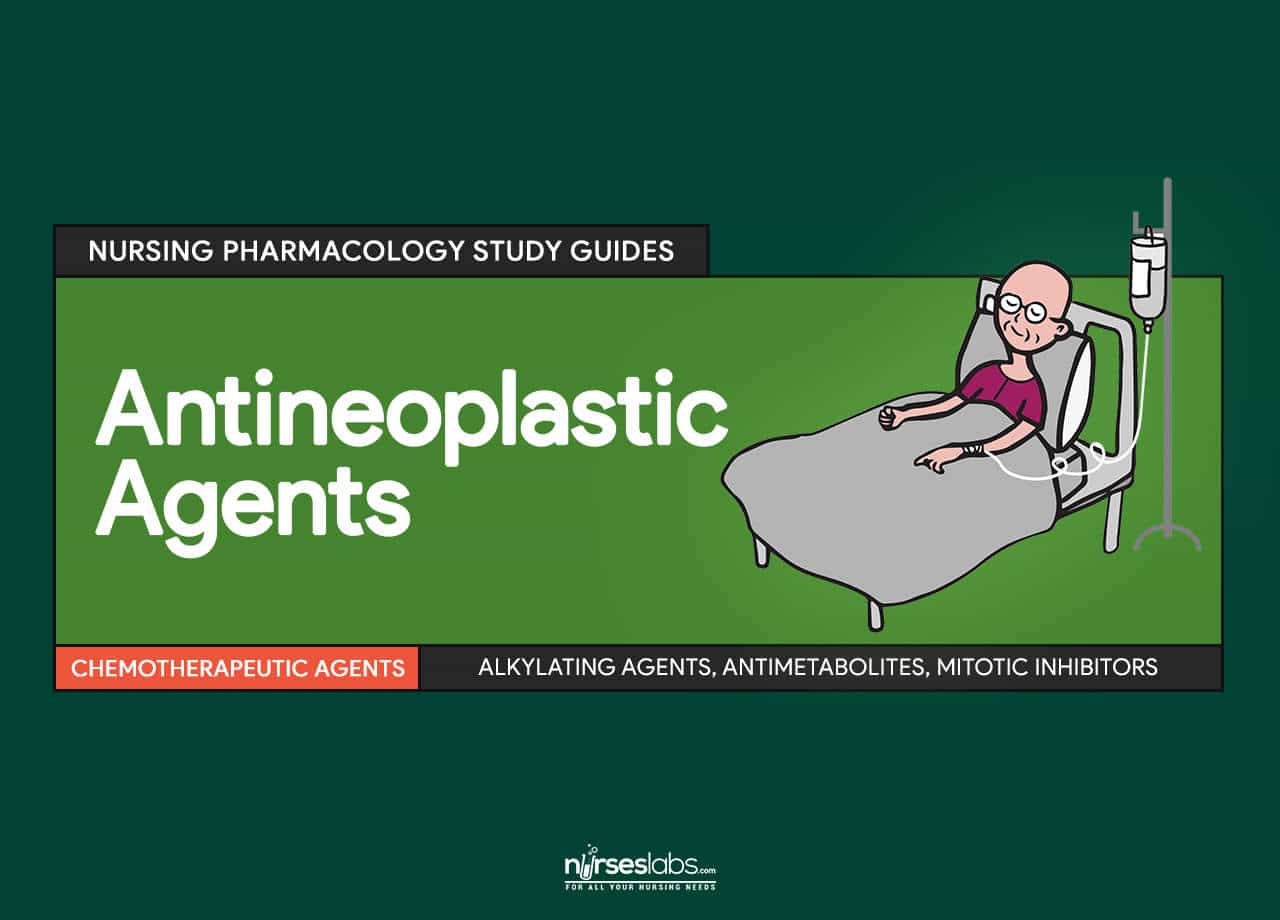



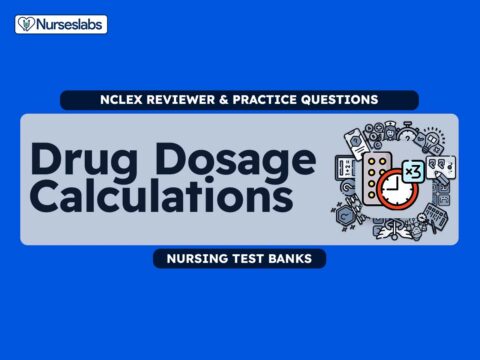


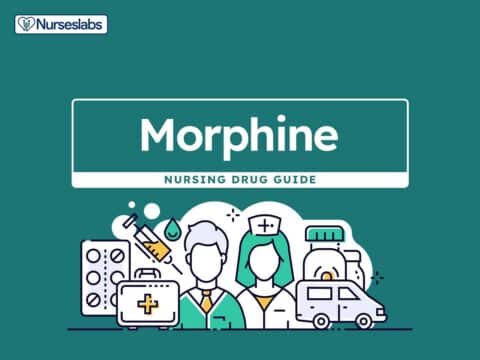
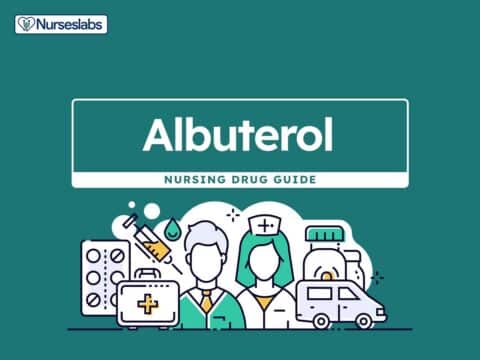
![Furosemide Nursing Considerations and Patient Teaching [Drug Guide]](https://nurseslabs.com/wp-content/uploads/2023/07/Furosemide-480x360.jpg)
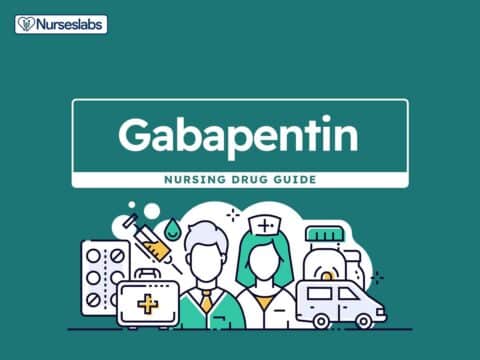
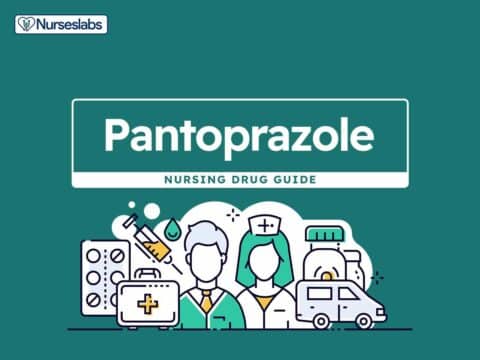
![Lisinopril Nursing Considerations and Patient Teaching [Drug Guide]](https://nurseslabs.com/wp-content/uploads/2023/03/Lisinopril-480x360.jpg)
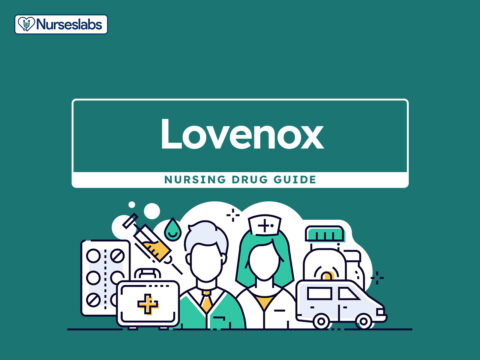
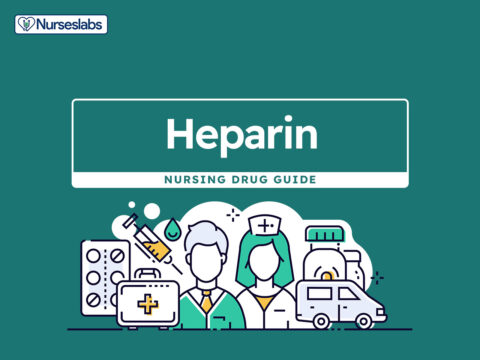
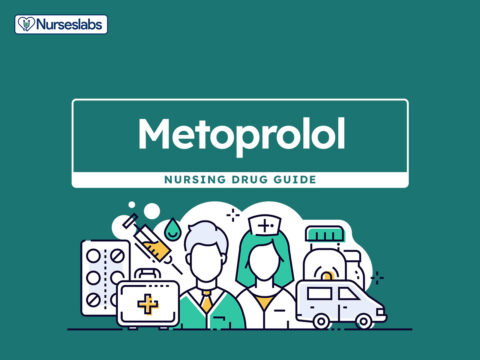
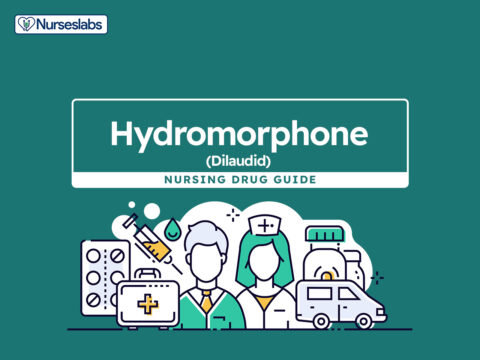
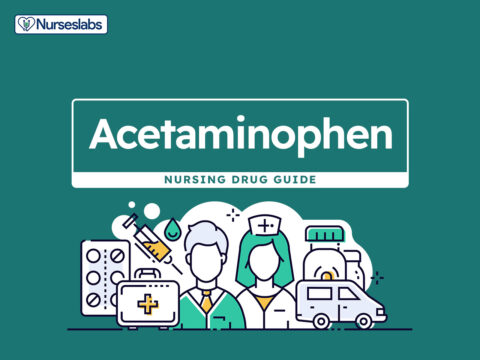

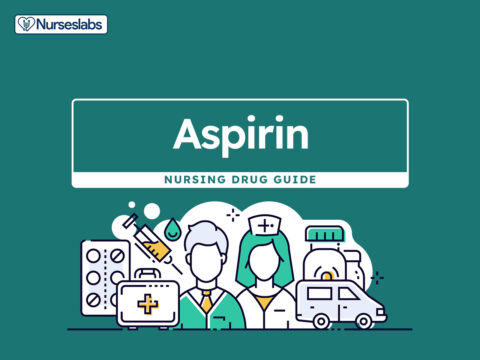
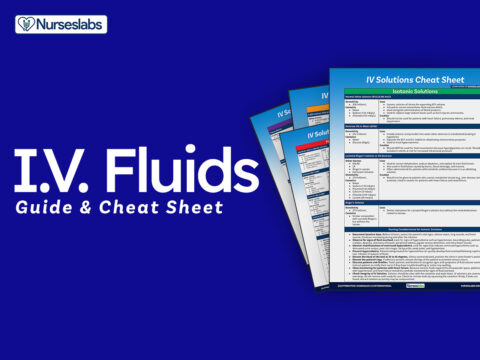
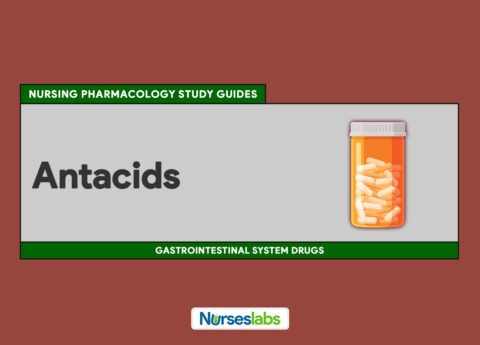
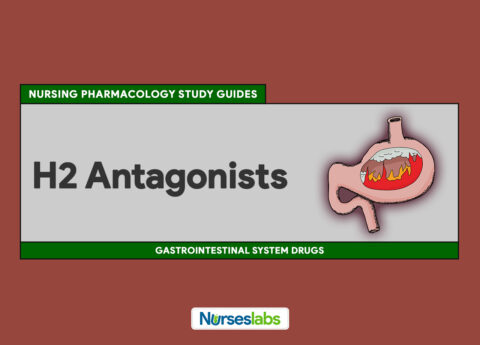
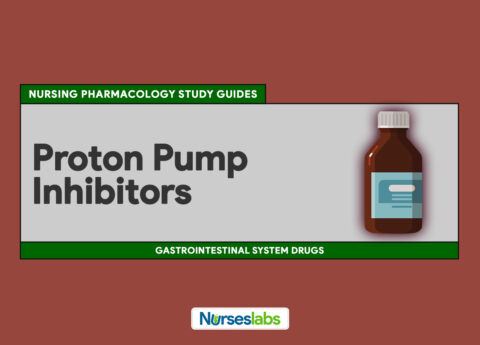
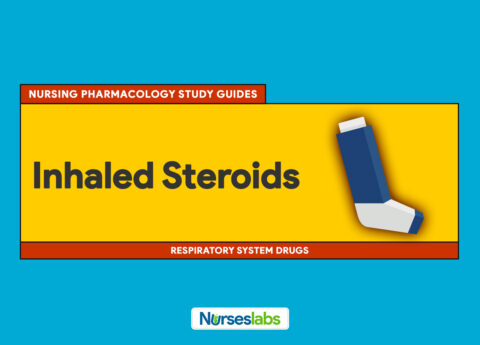
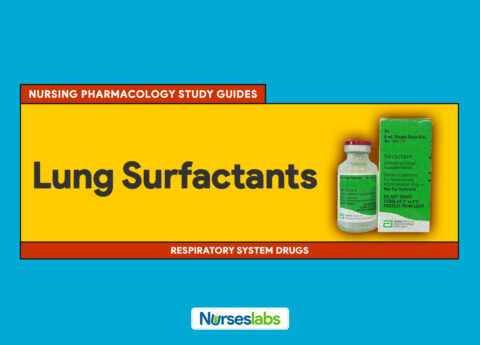
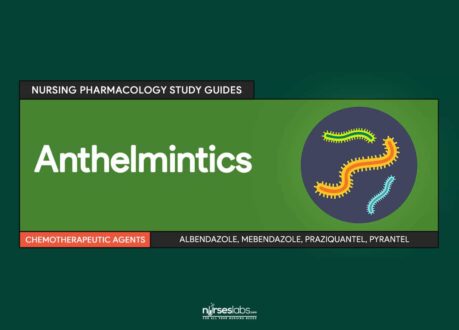



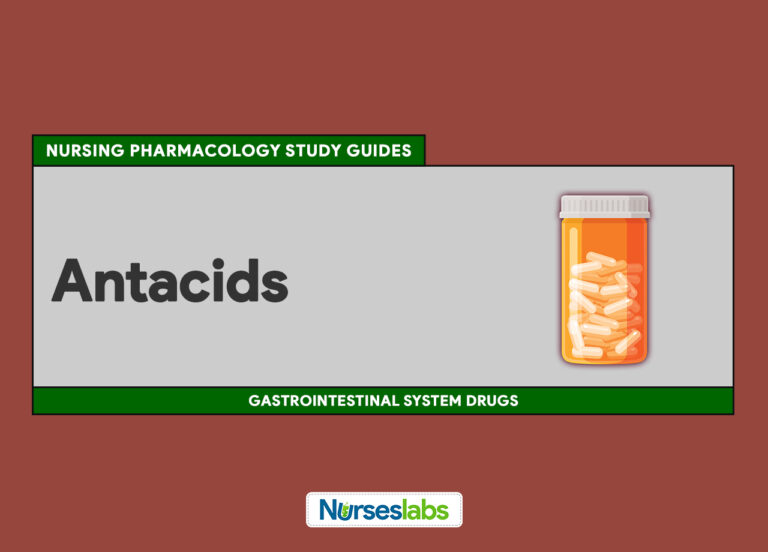
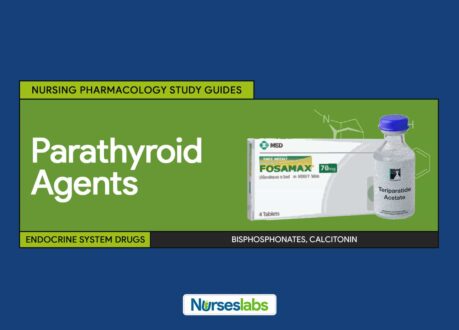
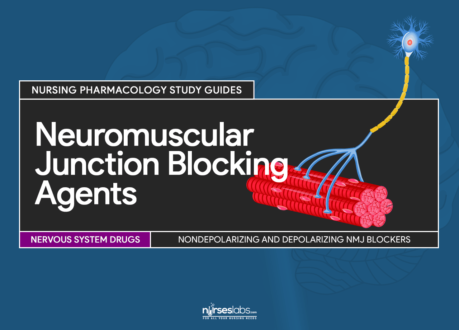

![Lisinopril Nursing Considerations and Patient Teaching [Drug Guide]](https://nurseslabs.com/wp-content/uploads/2023/03/Lisinopril-768x576.jpg)

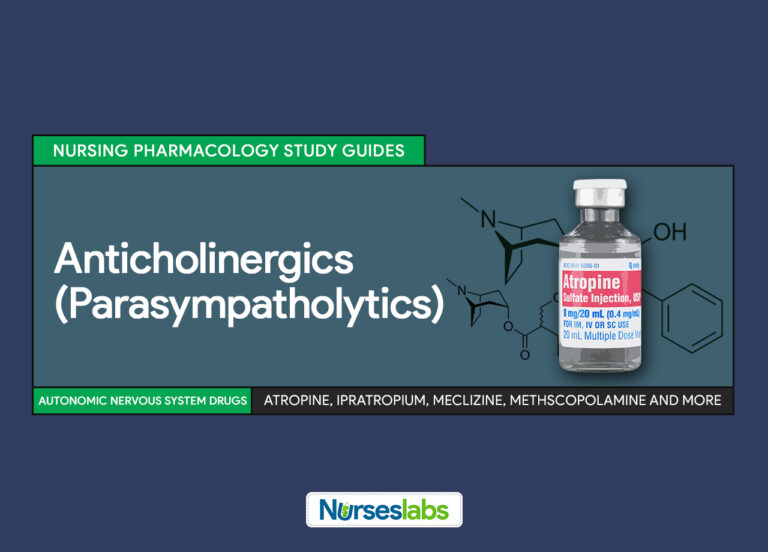

Leave a Comment